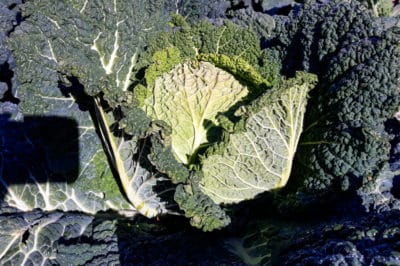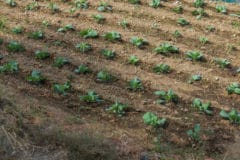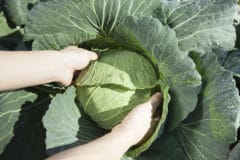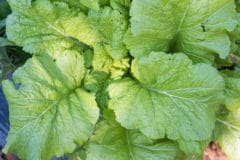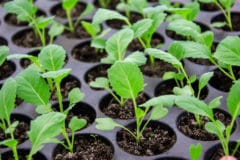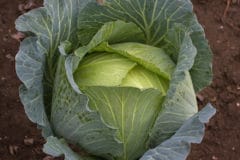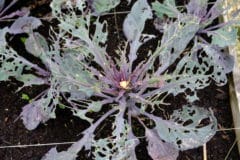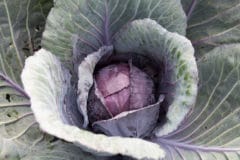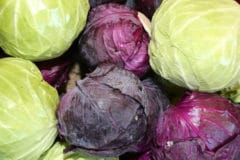Cabbage Sprouts
Like all plants, cabbage starts its growth as a sprout. As a sprout, it has two leaves, called cotyledon. These actually are not true leaves. Instead, they are part of the seed, and they produce nourishment for the root system as it develops so that the roots can support the true leaves. The sprout sends out a central taproot from which the root system spreads. When the true leaves appear, the cotyledons are no longer needed, so they shrivel up and drop off.
The Root System
Cabbage has a shallow root system that spreads out from the taproot, which means that the roots will grow down to between 18 inches to 36 inches. The depth of the root system is something to consider if you are interplanting crops to grow more in a small space.
Because cabbage has such shallow roots, you can plant it near crops that have root systems that grow down to a medium depth of between 36 inches and 48 inches and plants that have deep root systems that extend below 48 inches. For example, beets and beans both have root systems that grow to medium depths.
Before making a final decision on what vegetables to plant together, though, always make sure that the groupings include beneficial companion plants and exclude plants that don’t play well together. While beets and bush beans are among cabbage’s beneficial companion plants, cabbage does not get along well with either pole beans or runner beans.
Cabbage Leaves
Cabbage leaves grow in a tight, rosette-shaped cluster close to the base of the central stalk. On the stalk, the growth nodes that produce the leaves are closely spaced with very little stalk or internode between them. New leaves grow out at the top of the cluster while the older leaves at the bottom continue to grow larger.
For head cabbage, the heads form when the leaves begin to cup around the center. Early-maturing cabbages can form solid heads in around 60 days. Late-maturing cabbages, such as crinkly-leafed savoy, can take 85 to 90 days to form solid heads. The average time for cabbages to form mature heads is around 75 days.
Bolting Cabbage
Bolting cabbage is cabbage that is preparing to produce seed. Cabbage is a biennial crop, meaning it has a two-year growing cycle, and it doesn’t normally bolt until its second year. However, when Napa cabbage, Bok Choy, and Choy Sum are planted in the early spring, they are susceptible to being tricked into bolting. This can occur when an extended snap of cold weather inserts itself into more moderate spring weather. The cabbages believe they have been through winter and have begun their second growing season instead of their first.
When cabbage bolts, the leaves at the center of head cabbages separate slightly, and then the central stalk sends up a tall shoot. If this happens, you can let the cabbage produce seeds, or you can watch for the flowers to appear between the leaves and the stalk, pinch them off, and use them in salads or sauté them.
